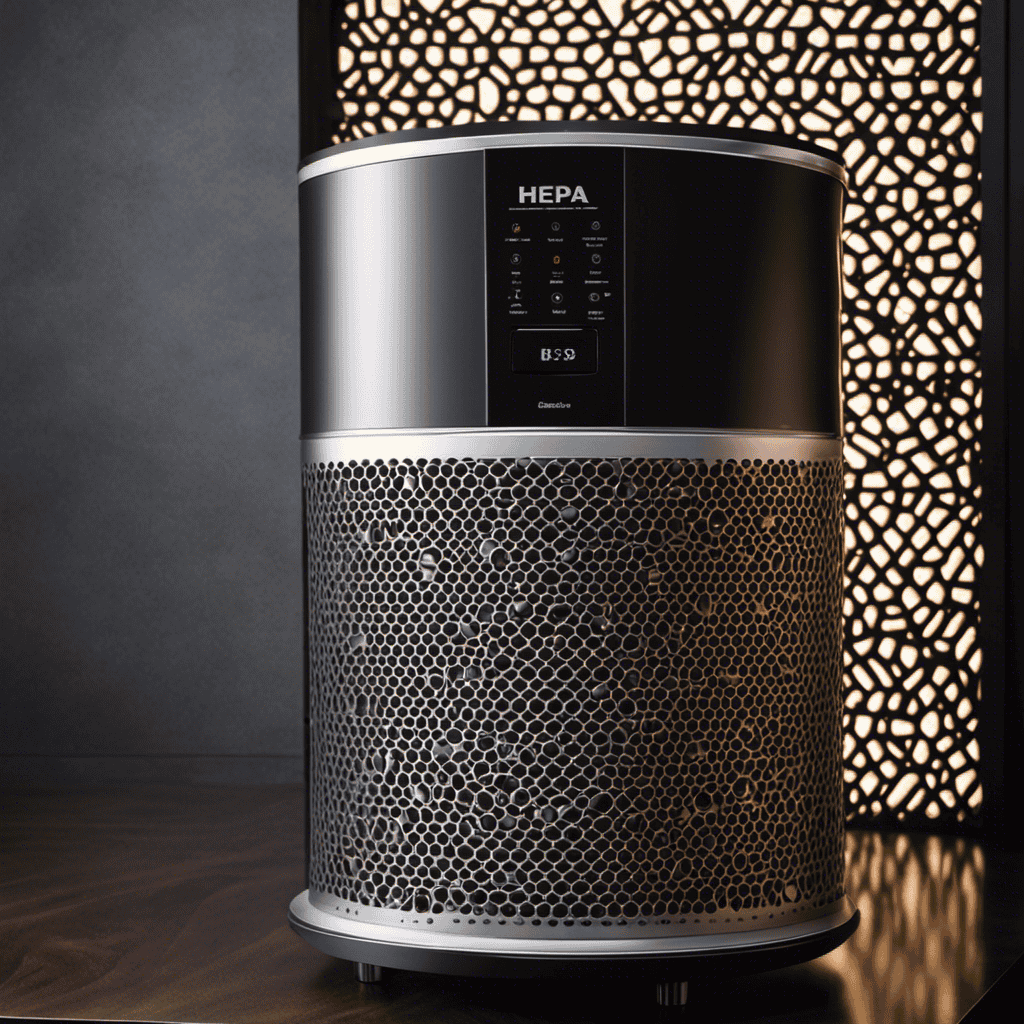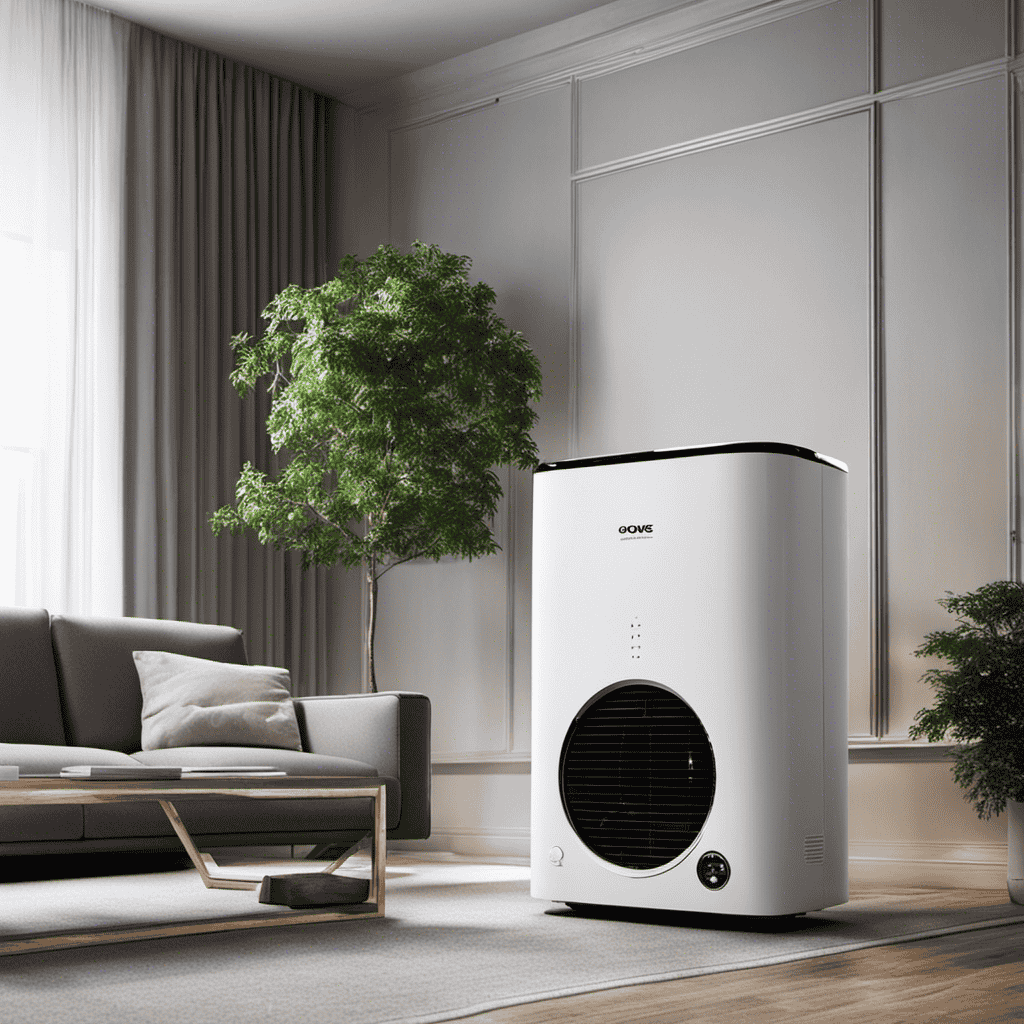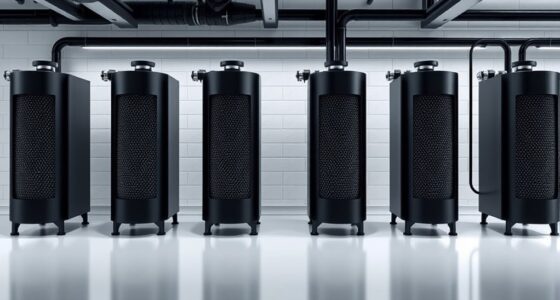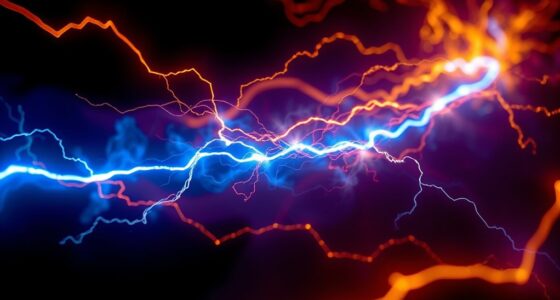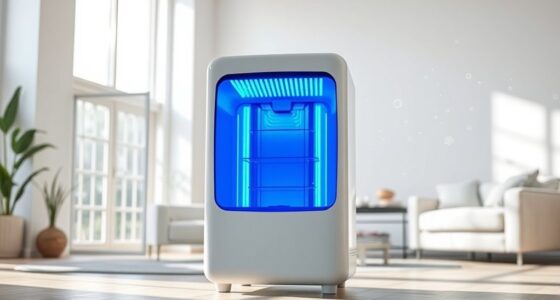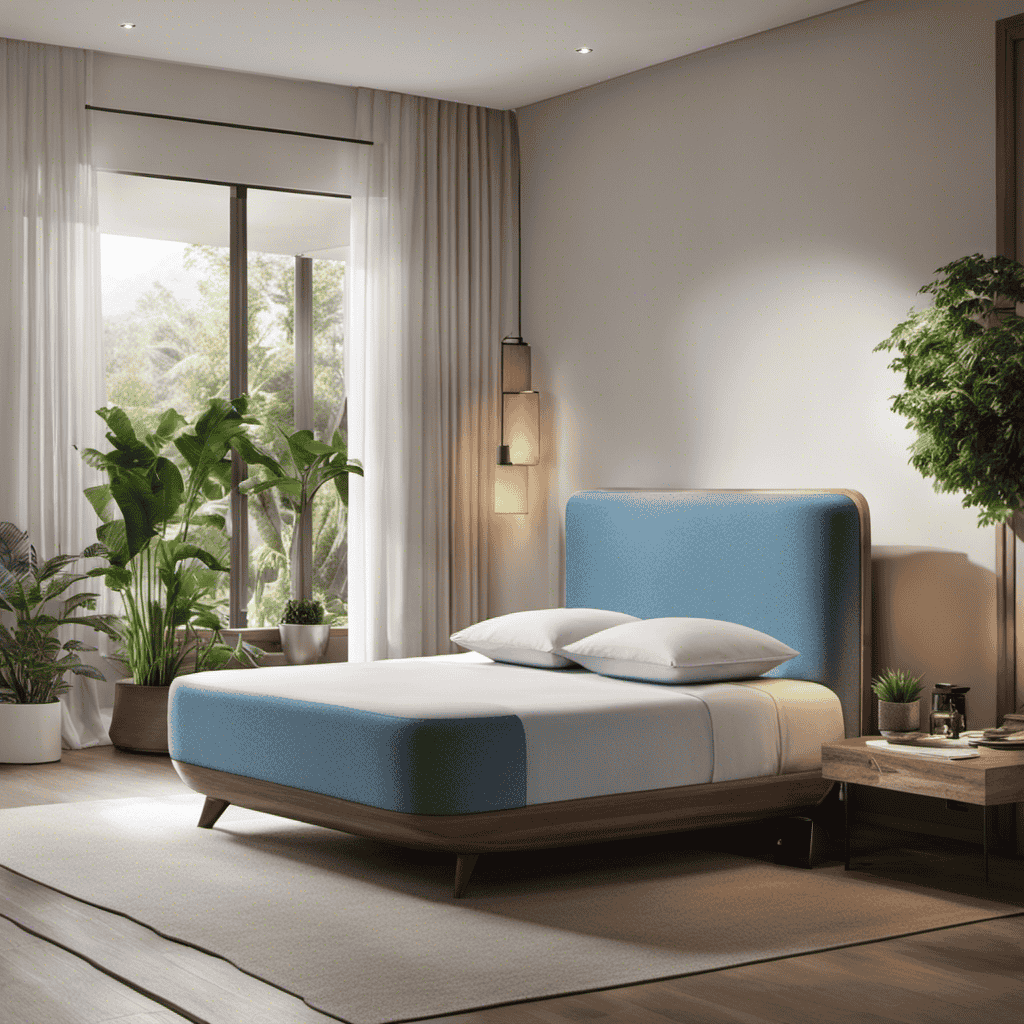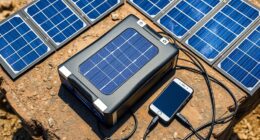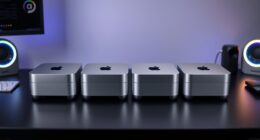Sitting in my house, inhaling deeply the clean air, I find myself amazed by the marvels of contemporary technology. You might wonder, how does a HEPA air purifier function? Allow me to share some insight with you.
These remarkable devices utilize a powerful HEPA filter to trap and remove airborne particles and allergens, ensuring the air we breathe is free from impurities. With proper air circulation and regular maintenance, HEPA air purifiers can significantly improve indoor air quality, providing a healthier living environment for all.
Key Takeaways
- HEPA filters are made up of dense fibers that can trap particles as small as 0.3 microns.
- HEPA filters effectively capture airborne contaminants such as dust, pollen, pet dander, and some bacteria and viruses.
- Air is drawn into the purifier through a fan and passes through a series of filters, including the HEPA filter, which captures microscopic particles.
- Good air circulation is important for proper air purification, as it prevents stagnant air, reduces humidity, and enhances the efficiency of the air purifier.
The Role of HEPA Filters in Air Purification
HEPA filters are essential for trapping and removing small particles from the air. They play a crucial role in the air purification process by effectively capturing airborne contaminants.
These filters are made up of a dense mat of fibers that can trap particles as small as 0.3 microns in size. The filtration process begins when air passes through the filter, and the fibers capture the particles. The fibers create a maze-like path that forces the air to slow down, allowing the particles to get trapped.
The particles then adhere to the fibers and are effectively removed from the air. This filtration process ensures that the air we breathe is free from harmful contaminants, such as dust, pollen, pet dander, and even some bacteria and viruses.
HEPA filters are highly efficient and are widely used in air purifiers to provide cleaner and healthier indoor air.
Understanding Airborne Particles and Allergens
To better understand airborne particles and allergens, it’s important to learn about how they can affect your indoor air quality. Indoor air quality refers to the condition of the air inside a building, which can have a significant impact on our health and well-being.
Common sources of airborne particles include:
- Dust mites: These microscopic creatures thrive in warm and humid environments, and their waste particles can trigger allergies and asthma.
- Pollen: Seasonal allergens released by plants can enter your home through open windows and doors, causing allergic reactions.
- Pet dander: Tiny flecks of skin shed by pets can become airborne and cause allergic responses in sensitive individuals.
- Mold spores: Mold grows in damp and poorly ventilated areas, and the spores it releases can lead to respiratory issues.
Understanding the sources of airborne particles is crucial in managing indoor air quality and ensuring a healthy living environment.
The Mechanism of HEPA Air Purification
If you’re curious about how an air purifier with a HEPA filter actually functions, understanding the mechanism of filtration can provide you with valuable insights.
HEPA stands for High-Efficiency Particulate Air, and it is a technology widely used in air purifiers due to its effectiveness in removing airborne pollutants.
The mechanism of air filtration in HEPA air purifiers involves three main steps.
First, the air is drawn into the purifier through a fan.
Then, the air passes through a series of filters, including the HEPA filter. This filter is designed to capture microscopic particles such as dust, pollen, pet dander, and even some bacteria and viruses.
Finally, the purified air is released back into the room.
The benefits of HEPA technology include improved indoor air quality, reduced allergy and asthma symptoms, and a cleaner living environment.
Understanding the mechanism of HEPA air purification is crucial to fully grasp the importance of air circulation in the purification process.
The Importance of Air Circulation in Purification
Improving the air circulation in your home is crucial for effective purification. When it comes to maintaining clean air, proper air circulation plays a vital role. Here are some key reasons why air circulation is important:
-
Prevents Stagnant Air: Good air circulation helps prevent stagnant air, which can lead to the buildup of pollutants and allergens.
-
Increases Efficiency of Air Purification: By improving air circulation, an air purifier can effectively filter and remove airborne particles, improving the overall air quality.
-
Reduces Humidity and Mold Growth: Proper air circulation helps reduce humidity levels, preventing mold growth and improving respiratory health.
-
Enhances Comfort: Good air circulation can help maintain a comfortable indoor environment by reducing stuffiness and odors.
Monitoring air quality and ensuring proper air circulation are essential for reaping the benefits of clean air. By investing in air quality monitoring devices and optimizing air circulation, you can create a healthier and more comfortable living space.
Evaluating the Efficiency of HEPA Air Purifiers
When it comes to evaluating the efficiency of HEPA air purifiers, two key points to consider are the effectiveness of the HEPA filter and the overall performance of the air purifier.
HEPA filters are known for their ability to trap and remove small particles, such as dust, pollen, and pet dander, making them highly effective in improving indoor air quality.
However, it’s important to assess the performance of the air purifier as a whole, taking into account factors such as air flow rate, room size, and noise level to ensure optimal purification.
HEPA Filter Effectiveness
To maximize the effectiveness of a HEPA air purifier, it is important to regularly replace the filters. This is crucial for maintaining the lifespan and performance of the HEPA filter, which is essential for efficient air purification.
Here are some important points to consider regarding HEPA filter maintenance:
-
Replace the filters on time: HEPA filters typically have a lifespan of around 6 to 12 months, depending on usage and air quality.
-
Check the filter indicator: Some air purifiers are equipped with indicators that signal when it’s time to replace the filter.
-
Clean pre-filters regularly: Pre-filters are designed to capture large particles and help prolong the lifespan of the HEPA filter. It is important to clean them regularly.
-
Follow manufacturer instructions: Each air purifier and filter comes with specific maintenance requirements. It is important to carefully follow the guidelines provided by the manufacturer.
By properly maintaining and replacing the filters, you can ensure that your HEPA air purifier continues to perform at its best, providing you with clean and fresh air.
Now let’s dive into the next section about air purifier performance.
Air Purifier Performance
After learning about the effectiveness of HEPA filters, let’s now delve into the overall performance of air purifiers.
Air purifier technology has come a long way in improving indoor air quality. These devices work by drawing in the surrounding air through various filters, including HEPA filters, to remove pollutants and allergens. The air is then released back into the room, significantly cleaner and healthier.
The performance of an air purifier depends on several factors, such as the size of the room, the CADR (Clean Air Delivery Rate), and the efficiency of the filters. CADR measures the amount of clean air delivered per minute, and higher CADR values indicate better performance. Additionally, some advanced air purifiers incorporate additional technologies like activated carbon filters, UV light, and ionizers to further enhance their performance in eliminating odors, bacteria, and viruses.
Ensuring good indoor air quality is crucial for our health, and air purifiers play a vital role in achieving this goal. With advancements in air purifier technology, we can now enjoy cleaner and fresher air in our homes and workplaces.
Maintaining and Cleaning Your HEPA Air Purifier
Maintaining and cleaning your HEPA air purifier is crucial for its optimal performance.
In this discussion, we will explore effective cleaning techniques, proper filter replacement, and the importance of regular maintenance.
Effective Cleaning Techniques
One of the most effective cleaning techniques for a HEPA air purifier is using a combination of filtration and ionization. This method ensures that airborne pollutants are efficiently captured and eliminated from the air. The process involves the following steps:
-
Filtration: HEPA filters are designed to trap particles as small as 0.3 microns, including dust, pollen, pet dander, and mold spores.
-
Ionization: Ionizers release negatively charged ions into the air, which attach to positively charged particles, causing them to clump together and become heavy, eventually falling to the ground or getting caught in the filter.
-
Activated carbon: Some HEPA air purifiers also feature activated carbon filters, which effectively absorb odors, chemicals, and volatile organic compounds (VOCs).
-
UV-C light: Certain models incorporate ultraviolet (UV-C) light technology to kill bacteria, viruses, and other microorganisms.
Proper Filter Replacement
In the previous section, we discussed effective cleaning techniques for HEPA air purifiers. Now, let’s focus on the importance of proper filter replacement and maintenance.
The filters in a HEPA air purifier play a crucial role in trapping and removing airborne particles, such as dust, pollen, and pet dander. Over time, these filters become saturated with pollutants, reducing their effectiveness.
Regular filter maintenance is essential to ensure optimal performance and prolong the filter’s lifespan. It is recommended to follow the manufacturer’s guidelines for filter replacement intervals, typically ranging from three to six months. Additionally, some purifiers have filter replacement indicators that notify you when it’s time to change the filters.
Neglecting filter maintenance can lead to decreased air purifier efficiency and compromised indoor air quality.
Now let’s delve into the importance of regular maintenance in the next section.
Importance of Regular Maintenance
Regular maintenance is crucial for ensuring optimal performance and longevity of the filters in a HEPA air purifier. By regularly replacing the filters, you can enjoy clean and healthy air in your home.
Here are some important reasons why regular maintenance is essential:
-
Improved air quality: Regular filter replacement ensures that the air purifier continues to effectively remove pollutants, allergens, and contaminants from the air, keeping it clean and fresh.
-
Enhanced performance: Over time, filters can become clogged with dirt and debris, reducing the efficiency of the air purifier. Regular maintenance helps to maintain the unit’s performance and effectiveness.
-
Prolonged filter lifespan: By replacing the filters at the recommended intervals, you can extend their lifespan and avoid costly replacements.
-
Avoiding common maintenance mistakes: Regular maintenance also involves cleaning the unit and checking for any issues. This helps to prevent common mistakes such as improper filter installation or neglecting other necessary maintenance tasks.
Frequently Asked Questions
Are HEPA Air Purifiers Effective in Removing Odors and Gases From the Air?
Yes, hepa air purifiers are effective in removing odors and gases from the air. They use a high-efficiency particulate air filter to trap and capture microscopic particles, improving indoor air quality in homes and offices.
Can HEPA Air Purifiers Help With Respiratory Conditions Such as Asthma and Allergies?
Hepa air purifiers have numerous benefits for respiratory conditions like asthma and allergies. They remove airborne particles, such as dust, pollen, and pet dander, which can trigger symptoms. Using hepa air purifiers can help alleviate respiratory issues and improve indoor air quality.
How Often Should the HEPA Filter in an Air Purifier Be Replaced?
I replace my HEPA filter every 6 to 12 months to ensure optimal performance. Regular replacement is important to maintain clean air quality and prevent the filter from becoming clogged with pollutants.
Can HEPA Air Purifiers Remove Viruses and Bacteria From the Air?
Yes, HEPA air purifiers can remove viruses and bacteria from the air. They use a high-efficiency filter to capture these particles, unlike UV air purifiers which use ultraviolet light to kill them. HEPA filters should be cleaned regularly to maintain their effectiveness.
Is It Safe to Use a HEPA Air Purifier in a Room With Pets?
Yes, it’s safe to use a HEPA air purifier in a room with pets. It can help control pet allergies by removing pet dander from the air, providing a cleaner and healthier environment.
Can You Explain How a Hepa Filter Air Purifier Works?
A hepa filter air purifier works by trapping small particles such as pollen, pet dander, and dust mites. The HEPA filter has a fine mesh that captures these harmful particles, ensuring that the air in your home is clean and safe to breathe.
Conclusion
In conclusion, HEPA air purifiers are an effective solution for improving indoor air quality by removing airborne particles and allergens. They work by using a dense filter that can capture particles as small as 0.3 microns with a 99.97% efficiency.
One interesting statistic is that HEPA filters can remove up to 99% of pollen, dust mites, pet dander, and other common allergens from the air. This makes them a valuable investment for those with allergies or respiratory conditions.
Remember to regularly clean and maintain your HEPA air purifier to ensure optimal performance.
